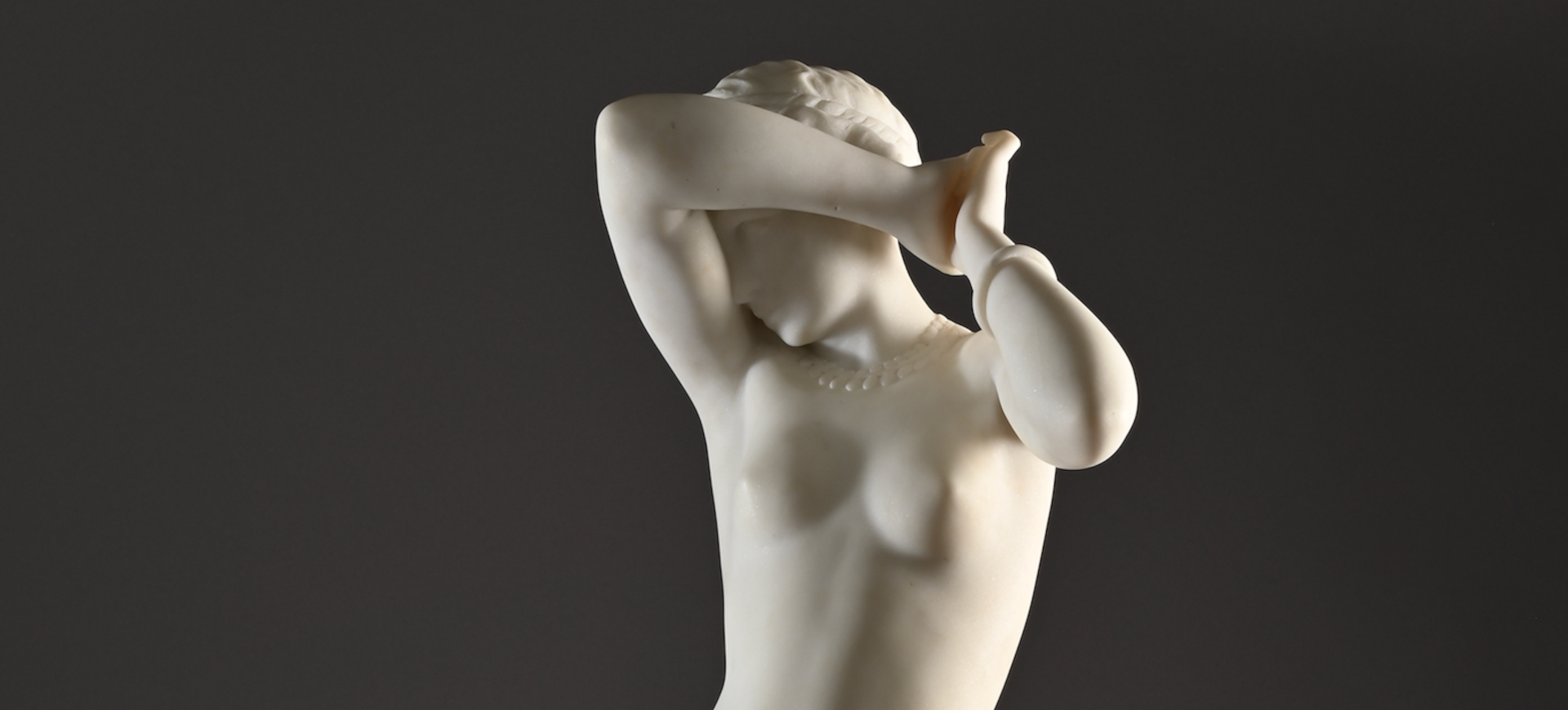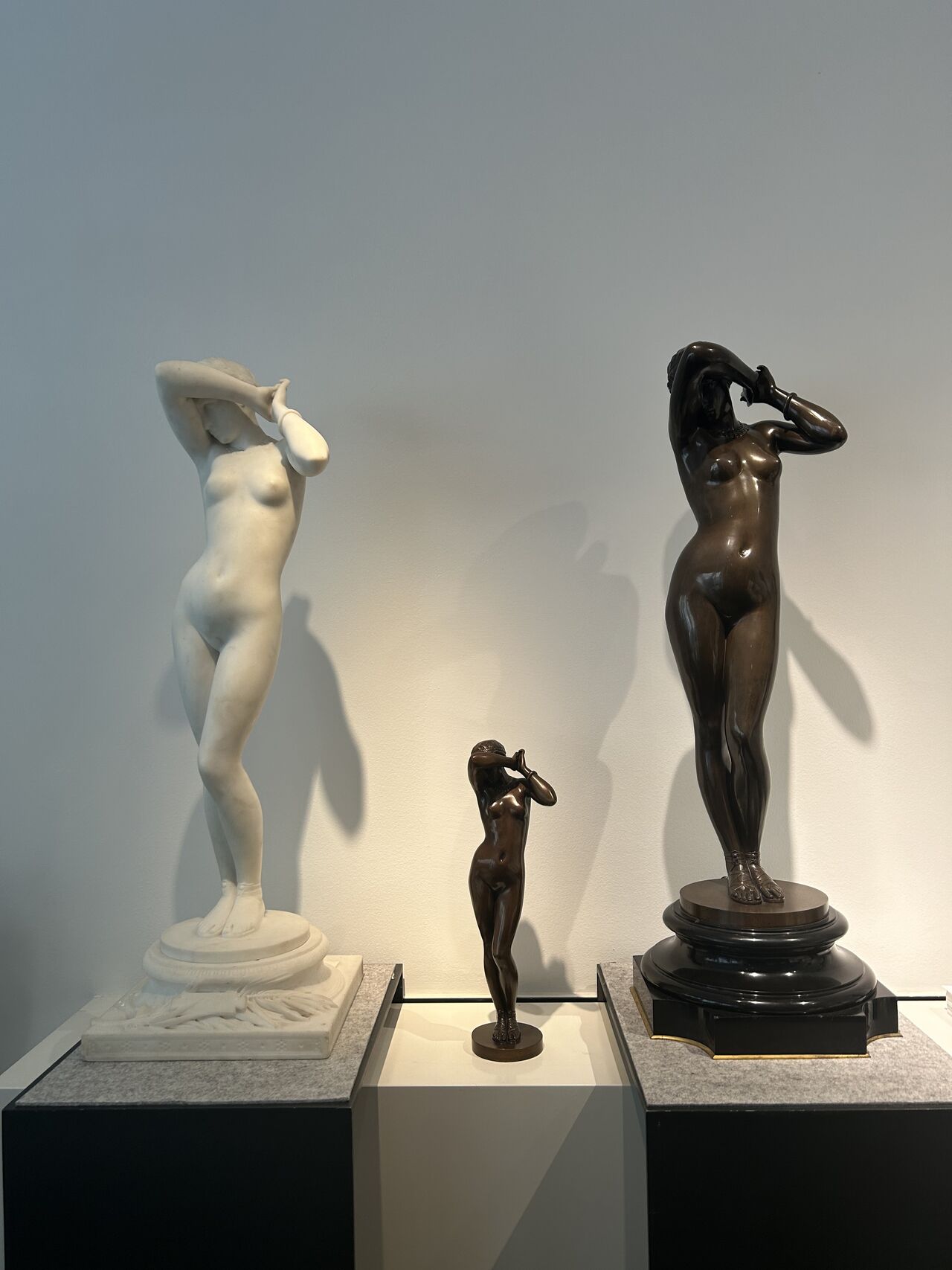
NEWS
Phryne by Falguière
The idea of transposing the work from painting to sculpture only occurred to the editor Goupil and the sculptor Falguière six years later, when the work was presented at the Universal Exhibition of 1867. It is true that Phryne had already captivated the sculptor Praxiteles in ancient Greece. ‘Falguière modelled this small figure,’ as Gérôme pointed out, who then retouched it before Goupil edited it. The model created by Falguière interprets the painting by refining the body of this woman, which is imbued with a great modernity compared to the neoclassical works that had marked the early 19th century.
It was then offered in bronze by Goupil in four different sizes and in marble at a height of 75 cm. Due to the success of Phryné, the artist decided to create a companion piece, La Cigale, which was his reinterpretation of a painting by Ingres, La Source. It is said that it was following these successes that the painter Gérôme embarked on a parallel career as a sculptor.
The Gallery is delighted to exhibit a very rare example of the Pharynx in marble, in bronze with the version of 75cm high.




